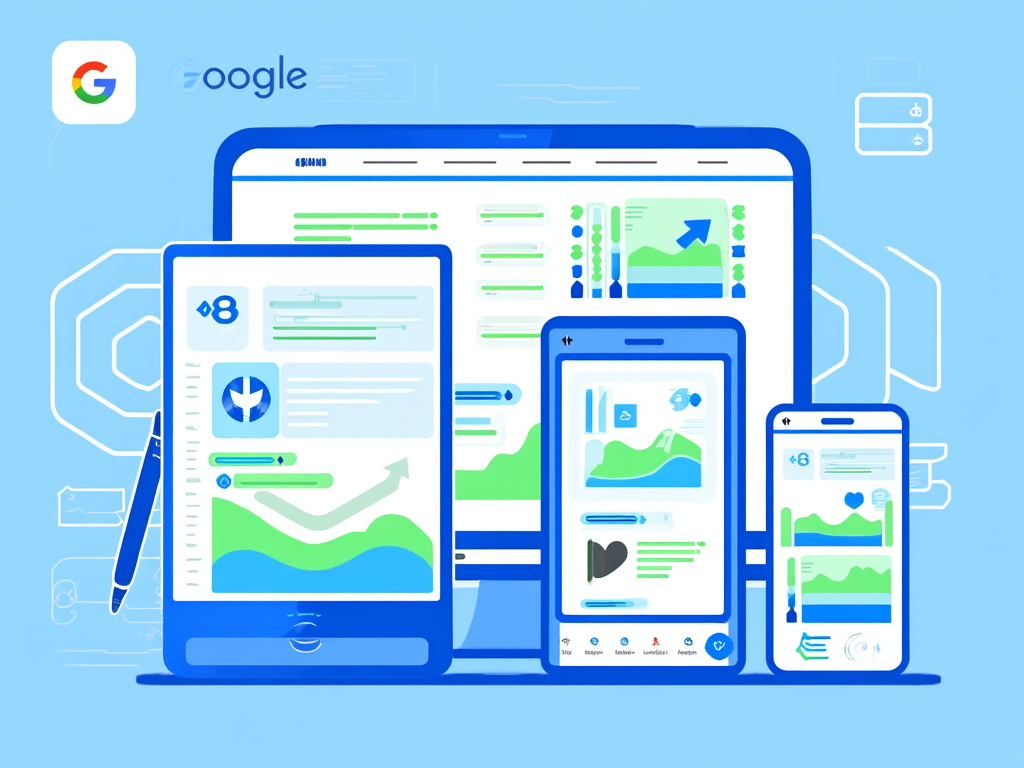ვებსაიტის კონვერსიების გაზრდის მიზნით მოქმედებისკენ მოწოდებების შექმნა
შესავალი
ციფრული მარკეტინგის უზარმაზარ სამყაროში, სადაც უამრავი ვებსაიტი იბრძვის ყურადღების მისაპყრობად, სწორი მოწოდება მოქმედებისკენ (CTA) შეიძლება თქვენი საიდუმლო იარაღი იყოს. კარგად შემუშავებული მოწოდებისკენ სწრაფვა გაცილებით მეტს აკეთებს, ვიდრე უბრალოდ ყურადღების მიპყრობას; ის ვიზიტორებს პასიური მკითხველიდან თქვენი ციფრული ეკოსისტემის აქტიურ მონაწილეებად აქცევს. წარმოიდგინეთ თქვენი ვებსაიტი, როგორც ხმაურიანი ბაზარი; მოწოდებისკენ სწრაფვა მეგობრული გამყიდველის როლს ასრულებს, რომელიც ცნობისმოყვარე გამვლელებს იზიდავს და მათი საჭიროებების გადაჭრის დაპირებებს სთავაზობს.
რა არის მოქმედებისკენ მოწოდება?
მოწოდებისკენ სწრაფვა შეიძლება იყოს მარტივი ფრაზა ან ღილაკი, რომელიც მომხმარებლებს მოქმედებისკენ მოუწოდებს — იქნება ეს საინფორმაციო ბიულეტენის გამოწერა, უფასო რესურსის ჩამოტვირთვა თუ შესყიდვის განხორციელება. ძირითადი მიზანია საიტის ვიზიტორების შეუფერხებლად წარმართვა კონკრეტული ქმედებისკენ, კონვერტაციის მაჩვენებლების გაუმჯობესება და მომხმარებლის გამოცდილების გაუმჯობესება. ეს არის ხიდი, რომელიც აკავშირებს ინტერესს ჩართულობასთან და, როდესაც ის გააზრებულად არის აგებული, ის წარმავალ ურთიერთქმედებებს ხანგრძლივ ურთიერთობებად აქცევს.
გავლენიანი მოწოდებების არსის იდენტიფიცირება
მიმზიდველი მოწოდების ძალისხმევის შესაქმნელად, პირველ რიგში, უნდა გესმოდეთ, რა იწვევს თქვენს სამიზნე აუდიტორიას რეზონანსს. ეს გაგება რამდენიმე ფუნდამენტურ ასპექტზეა დამოკიდებული:
-
სიცხადე უპირველეს ყოვლისა: თქვენმა მოწოდებამ თავისი მიზანი ნათლად უნდა ასახოს. ბუნდოვანება იწვევს დაბნეულობას, რაც უმოქმედობას იწვევს. წარმოიდგინეთ ღილაკი, რომელზეც უბრალოდ წერია „შემოგვიერთდით“. ამის ნაცვლად, სცადეთ „შემოგვიერთდით ჩვენს ინოვატორების საზოგადოებაში“, რათა განმარტოთ მოქმედების სარგებელი.
-
ემოციური კავშირი: მომხმარებელთან ემოციურ დონეზე დაკავშირება თქვენს მოწოდების ძალას (CTA) დამატებით ბიძგს მისცემს. მაგალითად, „გამოიწერეთ ახლავე“-ს ნაცვლად, შეგიძლიათ თქვათ „გაათავისუფლეთ ინფორმაცია, რომელიც თქვენს მოგზაურობას გააძლიერებს“. ეს არა მხოლოდ მოქმედებისკენ მოწოდებას გადმოსცემს, არამედ გადაუდებლობისა და მიზნის განცდასაც შთააგონებს.
-
სასწრაფო საჭიროების განცდა: სასწრაფოობის ჩართვა დაუყოვნებლივ მოქმედებას უწყობს ხელს. ფრაზები, როგორიცაა „შეზღუდული დროით შეთავაზება“ ან „მხოლოდ რამდენიმე დარჩა!“, ზემოქმედებს შანსის ხელიდან გაშვების შიშზე (FOMO) და მნიშვნელოვნად ზრდის კონვერსიებს.
იდეალური მოწოდების თხოვნის შემუშავება: გასათვალისწინებელი კომპონენტები
თქვენი მოქმედებისკენ მოწოდების თხოვნის შემუშავებისას გაითვალისწინეთ ეს მნიშვნელოვანი კომპონენტები:
-
ენა და ტონი:
- ილაპარაკეთ თქვენი აუდიტორიის ენაზე. თუ მათ მოსწონთ არაფორმალური ხუმრობა, ნუ მოერიდებით ხალისიან ტონს. Mailchimp-ის მსგავსი ბრენდები ცნობილია იმით, რომ იყენებენ მახვილგონივრულ ენას მეგობრული განწყობის შესაქმნელად.
-
დიზაინის ელემენტები:
- ზომა და ფორმა: სწორი ზომა უზრუნველყოფს ხილვადობას. დიდი, ფერთა კონტრასტული ღილაკი დაწკაპუნებებს იწვევს. წარმოიდგინეთ კომფორტული სავარძელი თქვენს მისაღებ ოთახში - თბილი და მიმზიდველი. სწორედ ასეთი უნდა იყოს თქვენი მოწოდების ძალა.
- ფერის ფსიქოლოგია: ფერები ემოციებს იწვევს. გამოიყენეთ ფერები სტრატეგიულად - წითელი გადაუდებლობისთვის, მწვანე - სიმშვიდისთვის, ლურჯი - ნდობისთვის - რათა ვიზიტორებისგან გარკვეული გრძნობები და რეაქციები გამოიწვიოთ.
-
განთავსება მთავარია:
- თქვენი მოწოდების თხოვნის განლაგება ისეთივე მნიშვნელოვანია, როგორც მისი დიზაინი. წარმოიდგინეთ თქვენი ვებსაიტი, როგორც მოგზაურობა. გვერდის ზედა, შუა თუ ბოლოში, თქვენი მოწოდების თხოვნა უნდა ჰგავდეს კარგად განთავსებულ საგზაო ნიშანს, რომელიც ვიზიტორებს გზაზე უხელმძღვანელებს.
-
მობილური ოპტიმიზაცია:
- რადგან ვებსაიტებზე მობილური მოწყობილობებით წვდომის მქონე მომხმარებლების რაოდენობა სულ უფრო იზრდება, დარწმუნდით, რომ თქვენს მოწოდების ბრძანებებზე დაწკაპუნება მარტივია, რესპონსიული დიზაინის საუკეთესო პრაქტიკის დაცვით.
ეფექტური მოწოდების მაგალითები
მოდით, ჩავუღრმავდეთ რეალურ მაგალითებს, რათა გავეცნოთ წარმატებული მოწოდებებისკენ სწრაფვის ხელოვნებას:
-
Dropbox: მარტივი, მაგრამ ძლიერი ფრაზის „დაიწყეთ უფასოდ“ გამოყენებით, ისინი აშორებენ რეგისტრაციის ბარიერებს და ამავდროულად ნათლად აწვდიან პოტენციურ მომხმარებლებს ინფორმაციას იმის შესახებ, თუ რას მიიღებენ.
-
გამარჯობაფრეში: მათი „გამოიწერეთ ყოველკვირეული ახალი ინგრედიენტების ყუთი“ არა მხოლოდ ყურადღებას იპყრობს, არამედ საჭმლის მომზადების მიმართ მოლოდინისა და აღფრთოვანების განცდას იწვევს.
ტესტირებისა და იტერაციის მნიშვნელობა
მოქმედებისკენ მოწოდება არ არის „დააყენე და დაივიწყე“ ტიპის კომპონენტი. მისი პოტენციალის სრულად გამოსაყენებლად, თქვენ უნდა მიიღოთ მონაწილეობა A/B ტესტირებაეს ნიშნავს თქვენი მოქმედების მოწოდების სხვადასხვა ვერსიის ექსპერიმენტირებას — ტექსტის, ფერის, ზომისა და განლაგების შეცვლასაც კი, რათა ნახოთ, რა არის მომხმარებლებში ყველაზე მეტად რეზონანსული. წარმოიდგინეთ ეს, როგორც მუსიკალური ინსტრუმენტის აწყობა; შეიძლება რამდენიმე ცდა დაგჭირდეთ, სანამ იდეალურ ნოტს დაიჭერთ.
-
ტექსტში არსებული ვარიაციები: სცადეთ მარტივი ფრაზების უფრო მიმზიდველი აღწერილობებით ჩანაცვლება. მაგალითად, სტანდარტული „რეგისტრაციის“ ნაცვლად, განიხილეთ „შემოუერთდი მოძრაობას“.
-
ფერების შეცვლა: თუ თქვენი ძირითადი მოქმედებისკენ სწრაფვა მწვანეა, სცადეთ მისი შეცვლა დამატებითი ელფერით, რათა ნახოთ, გადაიქცევა თუ არა მეტი თვალის კაკალი დაწკაპუნებად.
-
ინტერვალი და გასწორება: ზოგჯერ შევსების ან გასწორების მცირე ცვლილებას შეუძლია დიდი ცვლილებები შეიტანოს, რაც მომხმარებლებს საშუალებას მისცემს ჩაერთონ პროცესში გადატვირთვის გარეშე.
კონტექსტის როლი კონვერტაციაში
კონტექსტი გადამწყვეტ როლს თამაშობს იმაში, თუ რამდენად ეფექტურად ფუნქციონირებს მოწოდებისკენ სწრაფვა (CTA). მოარგეთ თქვენი მოწოდებისკენ სწრაფვა მომხმარებლის ქცევას ან მიმდებარე კონტენტს. მაგალითად, თუ ვიზიტორი ათვალიერებს ბლოგ პოსტს პროდუქტიულობაზე, შეგიძლიათ შესთავაზოთ მოწოდებისკენ სწრაფვა, როგორიცაა „ჩამოტვირთეთ ჩვენი საბოლოო პროდუქტიულობის ინსტრუმენტები“. ეს სპეციფიკა მათ ამჟამინდელ აზროვნებას ითვალისწინებს და ზრდის კონვერტაციის ალბათობას.
ემოციური ტრიგერები
ემოციები ამოძრავებს ქმედებებს. გაიაზრეთ ფსიქოლოგია, თუ რას გრძნობენ თქვენი მომხმარებლები თქვენს მოწოდების თხოვნის (CTA) შეხვედრის მომენტში. გამოიყენეთ ემოციურად დამუხტული ენა და გამოყავით ძირითადი უპირატესობები. დაფიქრდით, როგორ გრძნობს მოგზაური შთაგონებას თავისი ოცნების მოგზაურობის დაგეგმვისას. შექმენით მოწოდების თხოვნის (CTA), რომელიც ასახავს ამ მისწრაფებას - „გააღვივეთ თქვენი თავგადასავალი დღესვე!“ თქვენს შეთავაზებას მათი ოცნებების ასრულების კარიბჭედ აქცევს.
როდესაც უფრო ღრმად ჩაუღრმავდებით რეზონანსული მოწოდებების შექმნის ნიუანსებს, განიხილეთ სხვადასხვა სტრატეგიის დანერგვა, რომლებიც მორგებულია როგორც თქვენი აუდიტორიის სურვილებზე, ასევე თქვენს უნიკალურ ბიზნეს მიზნებზე. ამ ბალანსის დახვეწა ხელოვნების ფორმაა, რომელსაც შეუძლია სანახაობრივი შედეგების მოტანა. აღწერილი პრინციპების გამოყენებით, თქვენ მოამზადებთ საფუძველს კონვერსიაზე ორიენტირებული მოგზაურობისთვის, რომელიც უბრალო დაწკაპუნებებს გავლენიან მომხმარებლებთან ურთიერთობად გარდაქმნის.
FINDDOMAIN.GE (შპს ინტერნეტ სერვისები) ძალიან საინტერესო და სწრაფად განვითარებადი IT კომპანიაა. ძირითადი მიმართულებებია: ვებ-განვითარება, დომენები და ვებ-ჰოსტინგი. ის ასევე სთავაზობს კლიენტებს ძირითად სერვისებთან დაკავშირებულ ქვე-მომსახურებას და აუთსორსინგს.
საუკეთესო შეთავაზებები:
გსურთ შექმნათ თქვენი საკუთარი კომპანიის ვებსაიტი ან შექმნათ თქვენი საკუთარი ონლაინ ბიზნესი ინტერნეტში?
– ვებ ჰოსტინგი
– დომენის რეგისტრაცია
– ვებ-განვითარება
– საიტის შემქმნელი



## ძალისხმევის მოწოდების ეფექტურობის გაზომვა და ანალიზი
თქვენი მოწოდებისკენ (CTA) სტრატეგიის ჭეშმარიტად გასაუმჯობესებლად, სასიცოცხლოდ მნიშვნელოვანია მისი ეფექტურობის მუდმივად გაზომვა. თქვენი მოწოდებისკენ სწრაფვის სტრატეგიის შესრულების თვალყურის დევნება დაგეხმარებათ ღირებული ინფორმაციის მოპოვებაში და მომავალი ვერსიებისთვის ინფორმირებული გადაწყვეტილებების მიღებაში.
მონიტორინგის ძირითადი მეტრიკები
-
დაწკაპუნების მაჩვენებელი (CTR):
- CTA-ს ეფექტურობის შესაფასებლად ერთ-ერთი ყველაზე მნიშვნელოვანი მეტრიკა არის დაწკაპუნების მაჩვენებელი. ეს მეტრიკა გიჩვენებთ, თუ ვიზიტორთა რამდენმა პროცენტმა დააწკაპუნა თქვენს CTA-ზე გვერდის ნახვის მთლიან ვიზიტორთა რაოდენობასთან შედარებით. დაბალი CTR მიუთითებს გაუმჯობესების შესაძლებლობაზე.
-
კონვერტაციის მაჩვენებელი:
- კონვერტაციის მაჩვენებელი ასახავს იმ მომხმარებლების პროცენტულ მაჩვენებელს, რომლებმაც დაასრულეს სასურველი მოქმედება თქვენს მოწოდების ძალაზე დაწკაპუნების შემდეგ. იქნება ეს საინფორმაციო ბიულეტენზე გამოწერა თუ შენაძენის განხორციელება, უფრო მაღალი კონვერტაციის მაჩვენებელი მიუთითებს კარგად შემუშავებულ მოწოდების ძალაზე, რომელიც თქვენს აუდიტორიაში რეზონანსს იწვევს.
-
ბაუნსის მაჩვენებელი:
- თუ თქვენი ვიზიტორები გვერდის დათვალიერებისთანავე ტოვებენ ვებგვერდს, ეს მიუთითებს, რომ საჭიროა გაუმჯობესდეს როგორც მოწოდების თხოვნის დიზაინი, ასევე პოზიციონირება. მაღალი ბოუნს-რეიტი შეიძლება მიუთითებდეს, რომ თქვენი შეტყობინება არ შეესაბამება აუდიტორიის მოლოდინებს.
შესრულების თვალთვალის ინსტრუმენტები
თქვენი მოქმედების მოწოდების ეფექტურობის მონიტორინგისთვის გამოიყენეთ სხვადასხვა ანალიტიკური ინსტრუმენტი, როგორიცაა:
- Google Analytics: ეს ძლიერი ინსტრუმენტი საშუალებას გაძლევთ თვალყური ადევნოთ მომხმარებლის ქცევას, გაზომოთ CTR და გააანალიზოთ კონვერტაციის ძაბრები.
- Hotjar: მიიღეთ ინფორმაცია სითბური რუკებისა და სესიების ჩანაწერების საშუალებით, რომლებიც აჩვენებს, თუ სად აწკაპუნებენ მომხმარებლები და როგორ ურთიერთქმედებენ ისინი თქვენს ვებსაიტთან.
- Optimizely ან VWO: ეს საშუალებას გაძლევთ შეაფასოთ A/B ტესტირება, რაც დაგეხმარებათ განსაზღვროთ, თუ რომელი CTA ვარიაციები მუშაობს საუკეთესოდ დროთა განმავლობაში.
თქვენი მოწოდების თხოვნების დახვეწა უკუკავშირის საშუალებით
თვისებრივი უკუკავშირის შეგროვება რაოდენობრივ საზომებთან ერთად ფასდაუდებელია. დაუკავშირდით თქვენს აუდიტორიას გამოკითხვების ან კომენტარების სექციების საშუალებით. დასვით კითხვები, როგორიცაა:
- „რამ აიძულა ამ ღილაკზე დაგეჭირა?“
- „რა გიბიძგებდათ მოქმედებისკენ?“
პასუხები იძლევა ისეთ ინფორმაციას, რომლის გადმოცემაც მხოლოდ ციფრებით შეუძლებელია, რაც ავლენს მომხმარებლის განწყობას და ჩართულობის პოტენციურ ბარიერებს.
თქვენი მოწოდებების მოქმედების იტერაცია
ამ მიგნებების საფუძველზე, ნუ მოერიდებით თქვენი მოწოდებების შეცვლას. შესაძლოა, ეს ნიშნავდეს ალტერნატიული ფრაზების ტესტირებას, მათი პოზიციონირების გადახედვას ან თუნდაც ვიზუალური მასალის კორექტირებას მომხმარებლის მოლოდინებთან უკეთ შესატყვისად. ისევე, როგორც შეფ-მზარეული ახვეწავს თავის რეცეპტს, თქვენი მოწოდებები მოითხოვს არომატების განვითარებას, რათა აუდიტორიისთვის მიმზიდველი იყოს.
A/B ტესტირების როლი
ანალიზიდან მოქმედებაზე გადასვლა გულისხმობს ვალდებულებას, A/B ტესტირებაპრინციპი მარტივია: შექმენით მოწოდებისკენ სწრაფვის ორი ვერსია, ერთი ელემენტის ცვლილებით — იქნება ეს ფერი, ტექსტი თუ ზომა — და დააკვირდით, რომელი იწვევს მეტ ურთიერთქმედებას.
სეზონურობისა და ტენდენციების გამოყენება
გაითვალისწინეთ, რომ თქვენი მოწოდებების მოქმედების თხოვნის აქტუალობა შეიძლება დროთა განმავლობაში შეიცვალოს სეზონური ტენდენციების ან საზოგადოებრივი ცვლილებების გავლენით. მაგალითად, დღესასწაულების დროს, მოწოდების თხოვნის თხოვნა, როგორიცაა „შეიძინეთ თქვენი სადღესასწაულო შეთავაზება“, სეზონურ აღფრთოვანებას იწვევს, ხოლო დღესასწაულების შემდეგ, შეიძლება შეიცვალოს „ახალი წელი, ახალი შენ - დაიწყე დღესვე!“-ზე. თქვენი მოწოდებების მოქმედების თხოვნის ადაპტირება უზრუნველყოფს, რომ ისინი აქტუალური და მიმზიდველი დარჩეს.
შემთხვევის ანალიზი: წარმატება მოქმედებაში
მიმზიდველი მოწოდებებისკენ სწრაფვის ეფექტურობის გასამყარებლად, მოდით განვიხილოთ რამდენიმე რეალური გამოყენება:
-
Airbnb: მათ საიტზე გამოსახულია თვალსაჩინო მოწოდება, რომელიც ამბობს: „დაიწყეთ ძებნა“. ეს მატყუარად მარტივი ფრაზა მოქმედებისკენ მოუწოდებს და ამავდროულად, კვლევასა და აღმოჩენას გულისხმობს - მიმზიდველი წინადადება პოტენციური მოგზაურებისთვის.
-
Spotify: ცნობილია მიმზიდველი „დაიწყეთ უფასოდ“ მოწოდებით, რომელიც მყისიერად გადმოსცემს ღირებულებას და მოუწოდებს მომხმარებლებს ჩაერთონ ვალდებულების ზეწოლის გარეშე.
თქვენი ბრენდის იდენტობის ამაღლება
და ბოლოს, გახსოვდეთ, რომ მოწოდებისკენ სწრაფვის თხოვნები (CTA) უნიკალურ ლინზას გვთავაზობს, რომლის მეშვეობითაც თქვენი ბრენდის იდენტობა შეიძლება გამოჩნდეს. თითოეული მოწოდებისკენ სწრაფვა - მისი ენა, სტილი და კონტექსტი - არა მხოლოდ ის უნდა ასახავდეს, თუ რა გსურთ მომხმარებლებისგან, არამედ უნდა ასახავდეს იმას, თუ ვინ ხართ. ეს თანმიმდევრულობა ნდობას და ნაცნობობას ამყარებს, რაც მომხმარებლების გონებაში თქვენს ყოფნას ამყარებს.
დასკვნა: ეფექტური მოწოდების ძალის მქონე პირთა ტრანსფორმაციული ძალა
როდესაც თქვენი მოწოდებების დახვეწის ამ მოგზაურობას იწყებთ, გაითვალისწინეთ, რომ თითოეული ურთიერთქმედება პოტენციური კავშირია, რომელიც თქვენი მომხმარებლების გამოცდილებას აყალიბებს. ხელოვნება მათი პერსპექტივების გაგებაში, თქვენი შეტყობინებების ჰარმონიზაციასა და თქვენი მოწოდებების გარშემო არსებული ელემენტების მუდმივ ოპტიმიზაციაშია.
იქნება ეს დიზაინის ნიუანსების გათვალისწინება, შესრულების მონაცემების ანალიზი თუ მომხმარებლის ემოციებთან შესაბამისობა, წარმატებული მოწოდებისკენ სწრაფვა კონვერსიებზე მეტს ნიშნავს - ისინი ურთიერთობებსაც აძლიერებენ. ასე რომ, შემდეგი მოწოდებისკენ სწრაფვის შექმნისას, წარმოიდგინეთ ის არა მხოლოდ ღილაკად, არამედ როგორც ხელის ჩამორთმევა, საუბრის დასაწყისი და ხანგრძლივი კავშირების დამყარების შესაძლებლობა.
ეფექტური მოწოდებების შეთავაზების შექმნის შესახებ შესაბამისი ვიდეოები
- როგორ დავწეროთ ეფექტური მოწოდება მოქმედებისკენ
- A/B ტესტირება გაზრდილი კონვერსიებისთვის
- ფსიქოლოგია, რომელიც წინ უძღვის მოწოდების პირობებს (CTA)
ცნობები
- მოწოდების ძალადობის თაობაზე მოლაპარაკების მნიშვნელობა
- ეფექტური მოწოდების სტრატეგიები
- ანალიტიკის გამოყენება მოწოდების ნიშნად (CTA)
FINDDOMAIN.GE (შპს ინტერნეტ სერვისები) ძალიან საინტერესო და სწრაფად განვითარებადი IT კომპანიაა. ძირითადი მიმართულებებია: ვებ-განვითარება, დომენები და ვებ-ჰოსტინგი. ის ასევე სთავაზობს კლიენტებს ძირითად სერვისებთან დაკავშირებულ ქვე-მომსახურებას და აუთსორსინგს.
საუკეთესო შეთავაზებები:
გსურთ შექმნათ თქვენი საკუთარი კომპანიის ვებსაიტი ან შექმნათ თქვენი საკუთარი ონლაინ ბიზნესი ინტერნეტში?
– ვებ ჰოსტინგი
– დომენის რეგისტრაცია
– ვებ-განვითარება
– საიტის შემქმნელი








